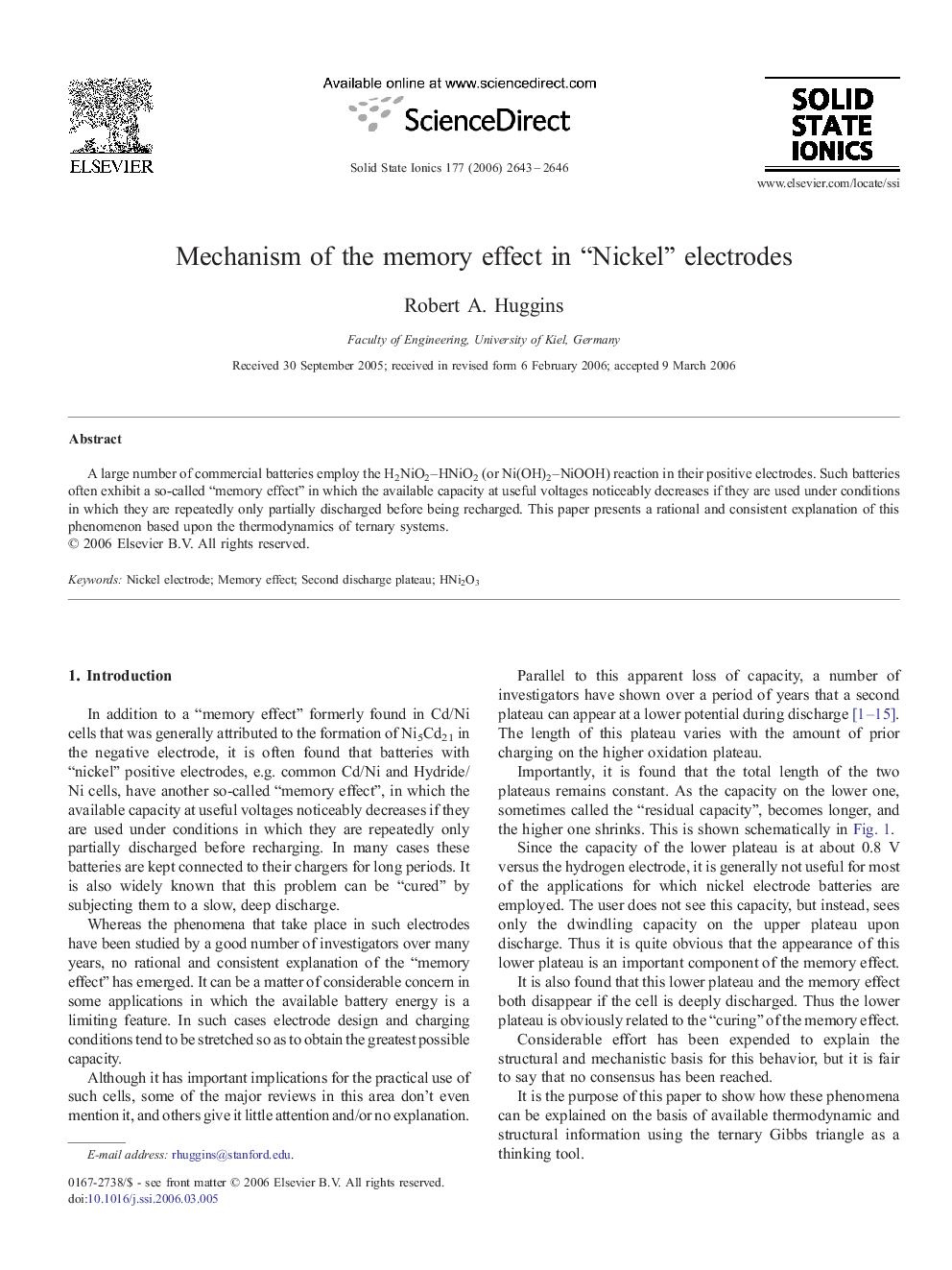| Article ID | Journal | Published Year | Pages | File Type |
|---|---|---|---|---|
| 1295544 | Solid State Ionics | 2006 | 4 Pages |
Abstract
A large number of commercial batteries employ the H2NiO2–HNiO2 (or Ni(OH)2–NiOOH) reaction in their positive electrodes. Such batteries often exhibit a so-called “memory effect” in which the available capacity at useful voltages noticeably decreases if they are used under conditions in which they are repeatedly only partially discharged before being recharged. This paper presents a rational and consistent explanation of this phenomenon based upon the thermodynamics of ternary systems.
Keywords
Related Topics
Physical Sciences and Engineering
Chemistry
Electrochemistry
Authors
Robert A. Huggins,
